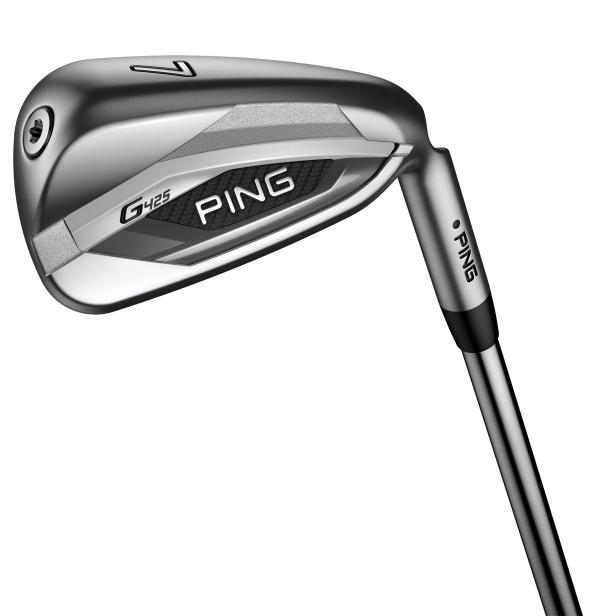WHAT YOU NEED TO KNOW: The G425 irons add speed while enhancing forgiveness in a slimmed-down shape. A new heat-treatment process strengthened the 17-4 steel used for the clubhead, allowing for a variable-thickness face 10 percent thinner than the G410 for added ball speed. A new Crossover utility iron boasts a hollow construction with a maraging-steel face for maximum flex in a long-iron replacement club.
THE DEEP DIVE: Almost from its inception, Ping has been known as a company that favored function over form—a mind-set valued by company founder Karsten Solheim. Although the company remains highly engineering-driven, it would be unfair to continue to solely look at its clubs as implements that simply work.
The new G425 irons are proof a club can be technologically sound and appeal to the eye at the same time. With a reduced blade length from heel to toe, the irons offer a pleasant visual at address as well as in the bag. Still, it’s the guts of the club where Ping excels. The G425 irons add speed while enhancing forgiveness in a shape that doesn’t go to extremes. A new heat-treatment process strengthened the 17-4 steel used for the clubhead, allowing for a variable-thickness face 10 percent thinner than the G410. That works with the top rail undercut and cascading sole design (where the sole is thinner near the face and gets thicker the further away from the face).
“That makes the face act like a hinge with more deflection,” says Dr. Paul Wood, VP of engineering for Ping. “As a result, dynamic loft at impact increases. That means the ball should fly not only faster, but reach a higher apex height.”
Forgiveness hasn’t been forgotten, either. Ping was able to move weight away from the face, resulting in a 3 percent increase in moment of inertia compared to the G410 irons to help mitigate the loss of ball speed on off-center strikes. The company also expands perimeter weighting—a hallmark of Ping irons for decades—by using a tungsten toe weight.
To address feel, the badge in the back cavity uses a combination of aluminum, polymer and backing tape to tame unwanted vibrations over a broader amount of the face to provide a pleasant feel.
Then there are the often overlooked details, the things designers know are important that golfers benefit from, but probably don’t notice. Things such as borrowing the groove design from its Glide 3.0 wedges to optimize spin. Or offering a Power Spec that is 1.5 to 2 degrees stronger for those wanting all the distance they can get along with a Retro Spec that is 1.5 to 2.5 degrees weaker for those willing to sacrifice some yards in exchange for more shot-stopping power. Or the Arccos shot-tracking sensors in the grip that, when paired with the Arccos Caddie app, can provide useful data analytics to make your game better. Given that, it’s no wonder this continues to be one of the game’s best-selling iron franchises since 2003.
The G425 irons ($1,000, set of eight with steel shafts) are available in 4-iron through 9-iron, as well as gap wedge (UW, 49.5 degrees), SW (54 degrees) and LW (58 degrees).
For more yards in the long irons, Ping also is introducing a new G425 Crossover utility iron. A hollow-body construction with a zippy maraging-steel face, the Crossover is available in three lofts (18, 20, 22.5 degrees, $250).

